AWS Solutions Architect Associate Certification
Designing for Cost Optimization
Foundation Areas of Cost Optimization on AWS
Welcome, future solutions architects!
Presented by Michael Forrester, this article explores five essential areas for optimizing cloud costs on AWS.
When discussing cost optimization in the cloud, it’s not about vague rituals or ad hoc practices. Instead, you must focus on key areas that enable robust cost optimization strategies on AWS. These areas include effective cloud financial management, expenditure and usage awareness, selection of cost-effective resources, efficient supply and demand management, and continuous optimization over time.
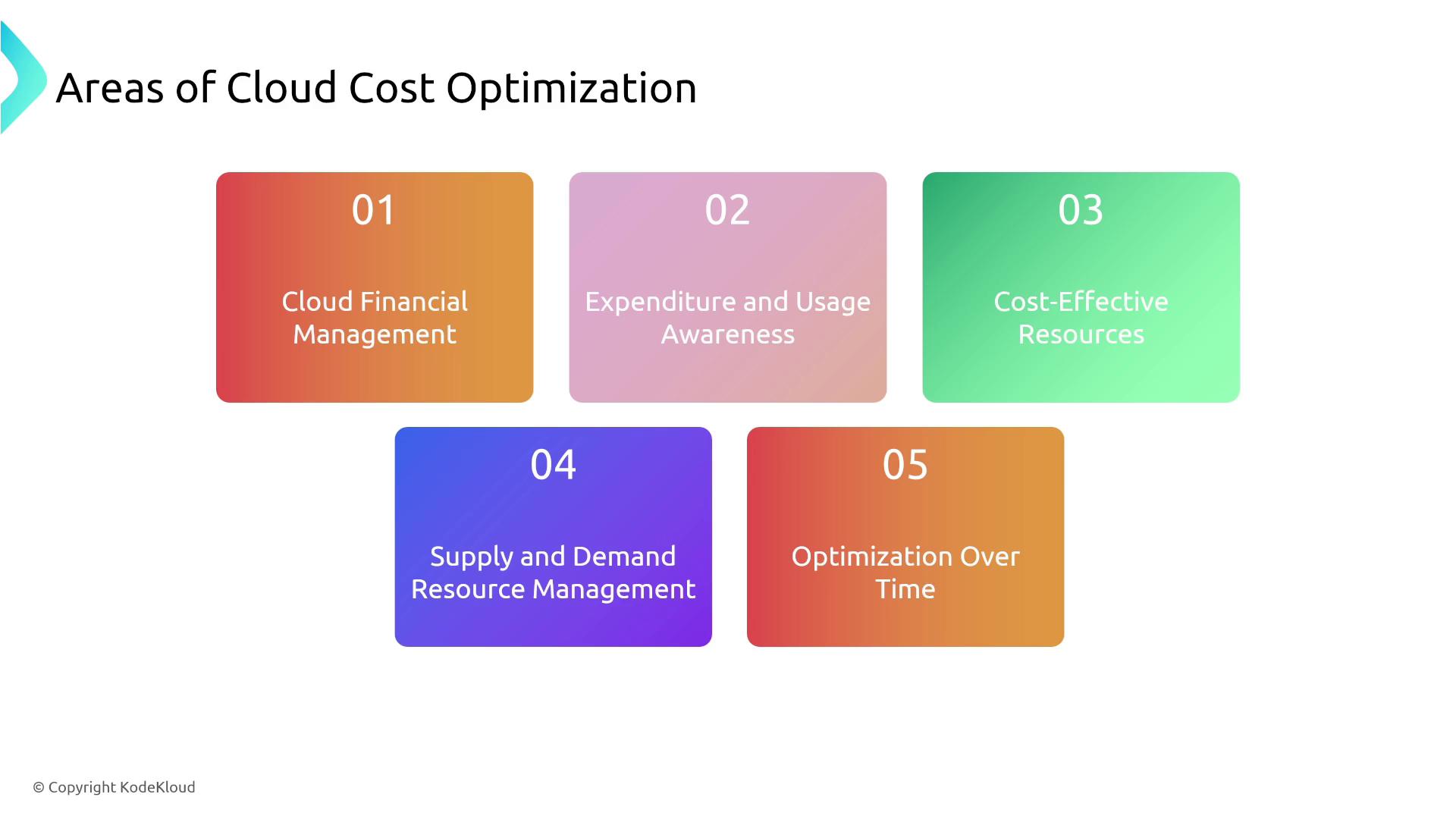
1. Practice Cloud Financial Management
Cloud financial management is the cornerstone of effectively managing expenses in the AWS environment. This approach adapts traditional financial processes to provide transparency around costs, planning, and control.
Traditional static waterfall planning and IT budgeting models often lead to inaccurate forecasts compared to the dynamic, ever-changing cloud environment. Cloud Financial Management (CFM) enables product, technology, and business teams to scale cost controls in tandem with growth, reflecting that cloud costs can vary daily or even hourly.
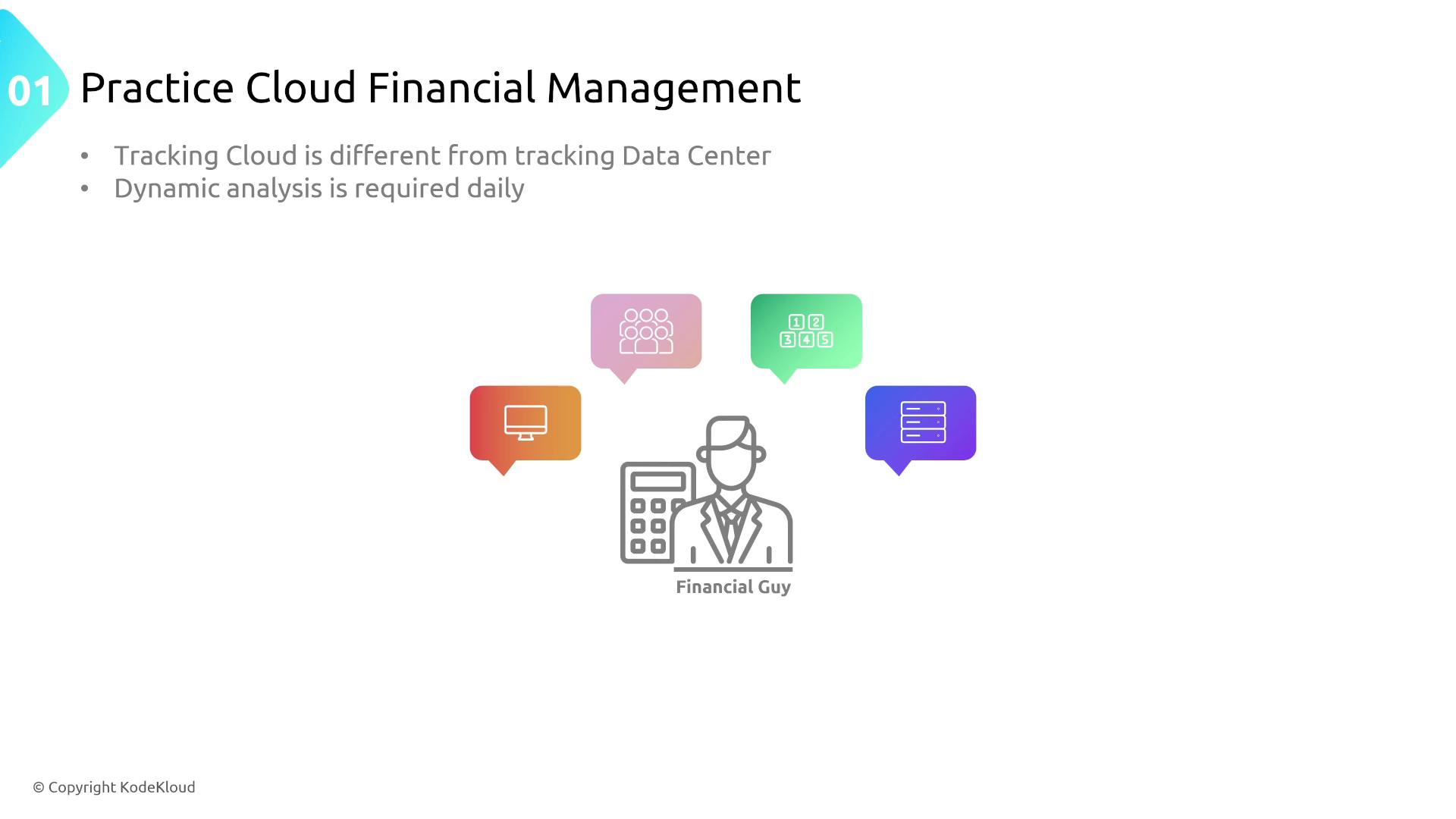
Note
Unlike static data center costs, cloud spending is highly dynamic. Regular, proactive financial analysis is essential for maintaining control over your AWS environment.
2. Develop Expenditure and Usage Awareness
Accurate tracking and understanding of expenditures are vital for effective cost management. By mapping out where money is spent and understanding cost drivers, your organization can optimize expenses and uncover opportunities for savings.
Establishing organizational responsibility for cost management, along with implementing incentives for teams to reduce spending, fosters a culture of continuous improvement.
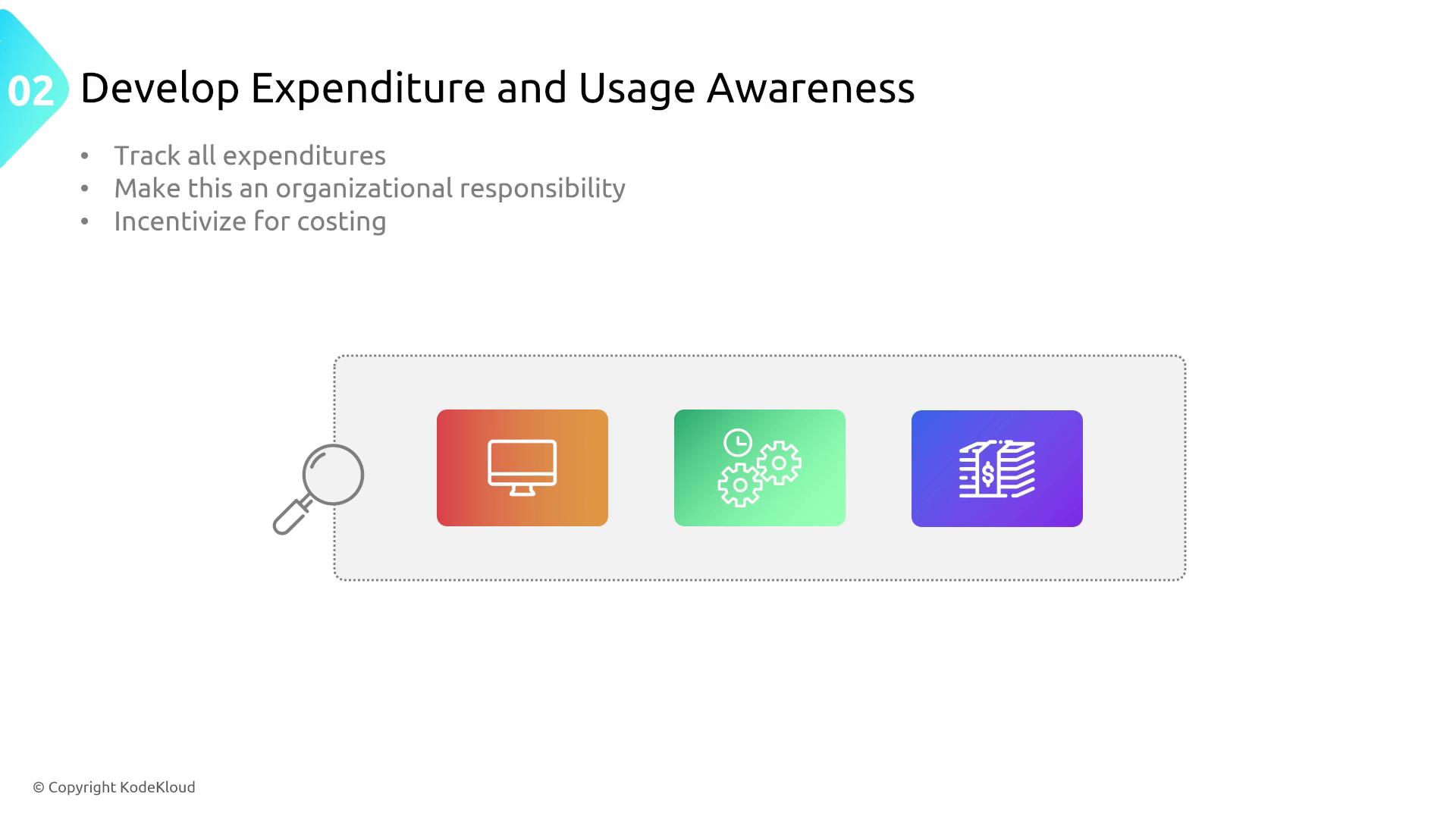
3. Create Cost-Effective Resources
Selecting the right AWS resources and configuring them appropriately is a critical element in cost optimization. Evaluate your workloads carefully to choose resource types, sizes, and pricing models that offer the best balance of performance and cost-efficiency.
Consider these key factors:
- The cost implications of various resource types and sizes
- Pricing models that best suit your workload demands
- Network costs, particularly data transfer fees, which can be a hidden expense compared to traditional data centers
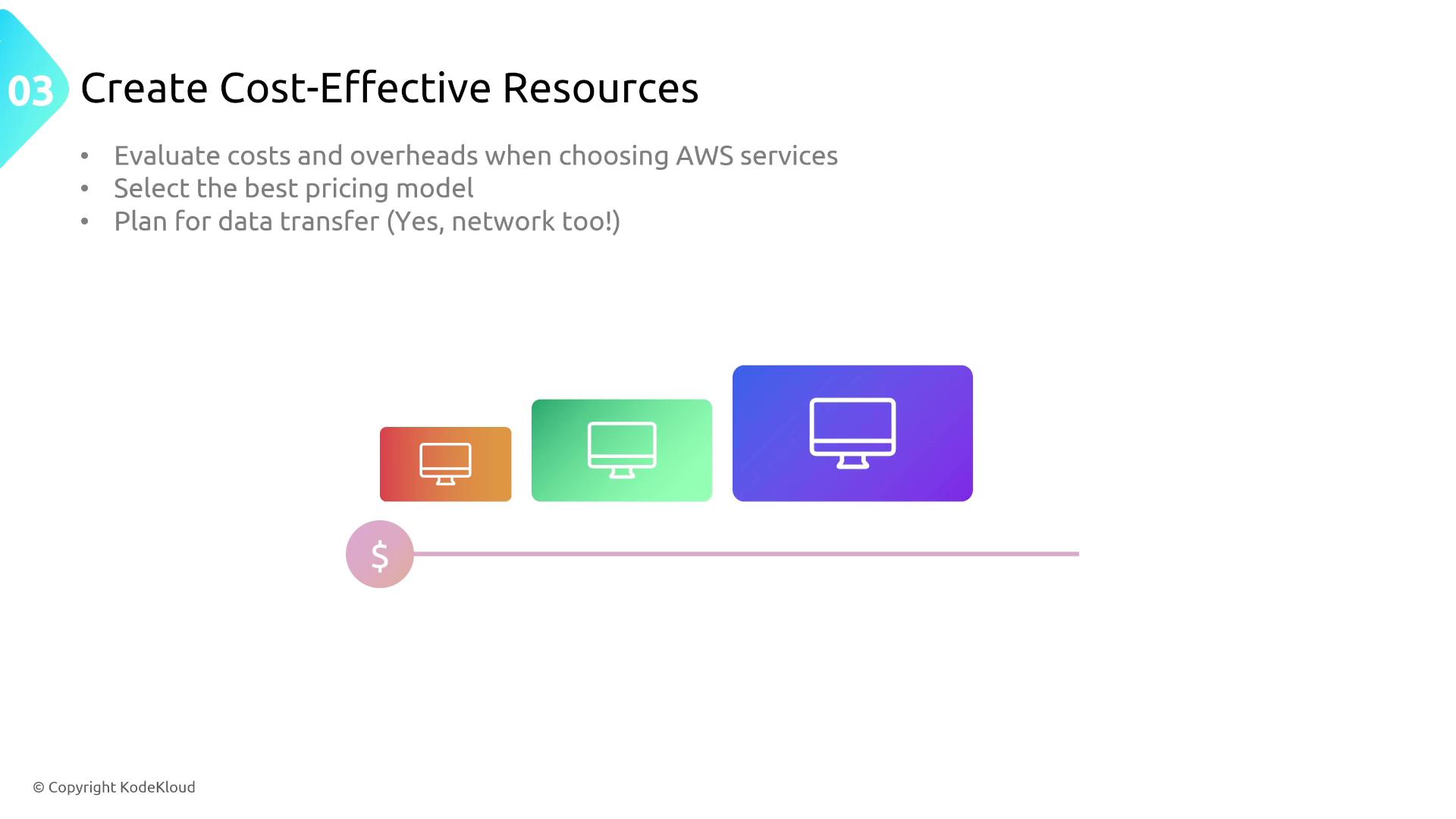
4. Manage Demand and Supply for Resources
Optimizing cloud costs also involves aligning supply with demand. In the cloud, you pay solely for what you use, which means your infrastructure must scale with customer demand.
Effective capacity planning ensures that your system can scale up quickly during peak usage and scale down during off-peak times. The recommended strategy is to scale aggressively upwards while scaling down conservatively, ensuring sufficient capacity buffers without over-provisioning resources.
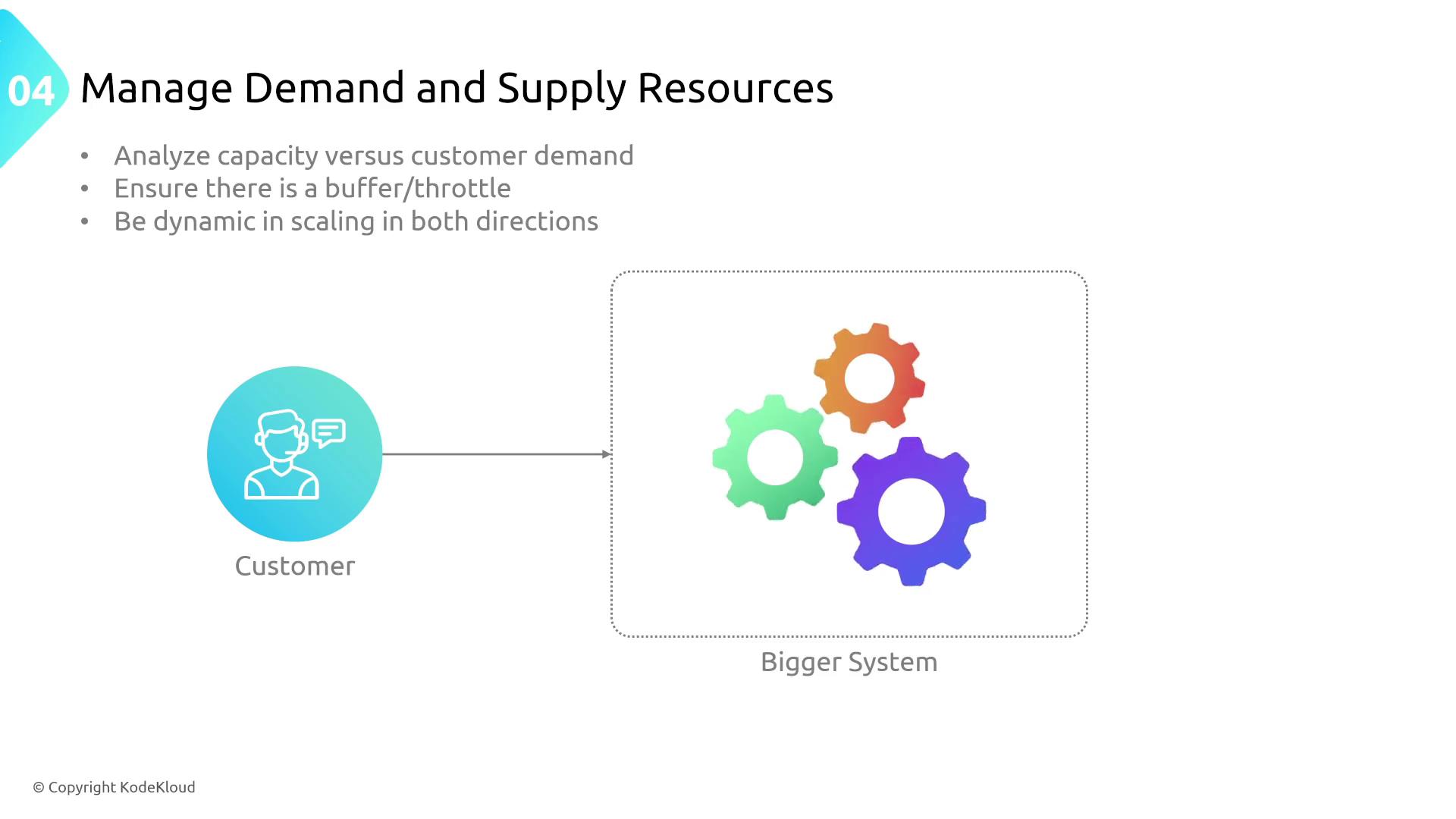
5. Optimize Over Time
Cost optimization is an ongoing process. As your business and technical requirements evolve, regularly reassess and adjust your AWS deployments. This involves decommissioning unused workloads, right-sizing resources, and continuously reviewing performance data.
Frequent monitoring—ideally on a daily or even hourly basis—is crucial. Automation can assist in maintaining vigilance over performance metrics and cost trends to ensure your environment remains cost-effective.
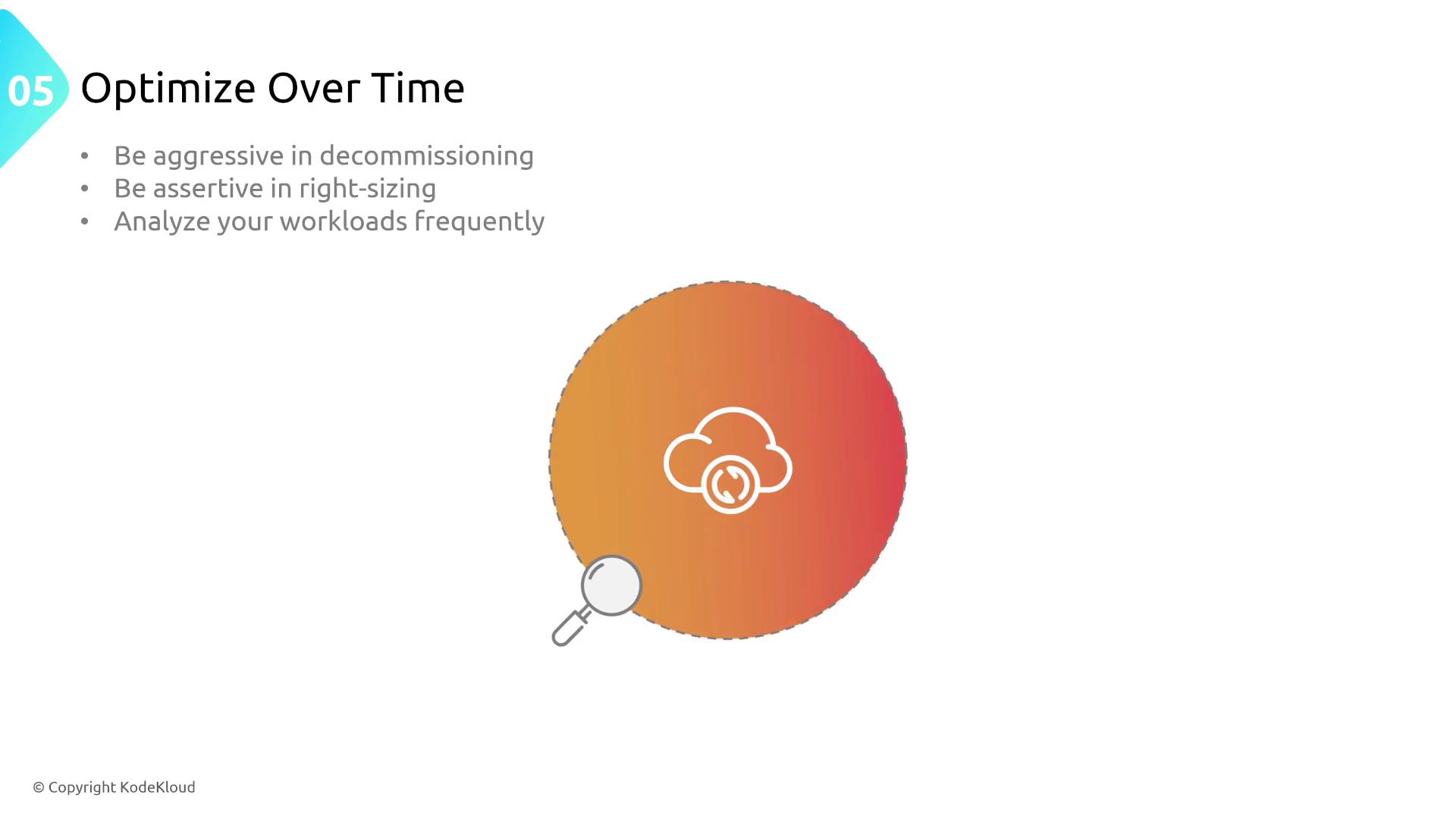
Summary
These key areas not only support AWS cloud design principles but also provide practical approaches to improve cost efficiency. In summary, effective cost optimization on AWS requires you to:
- Practice cloud financial management
- Develop expenditure and usage awareness
- Create cost-effective resources
- Manage supply and demand for resources
- Continuously optimize over time
Key Takeaway
Tracking expenditures is arguably the most critical component. Without a clear understanding of how and where money is spent, further optimization initiatives may fall short.
Keep these principles in mind as you design your AWS solutions. Although they might not appear directly on certification exams, they lay the essential groundwork for tackling scenario-based questions effectively.
Michael Forrester thanks you for reading this article. See you in the next lesson.
Watch Video
Watch video content